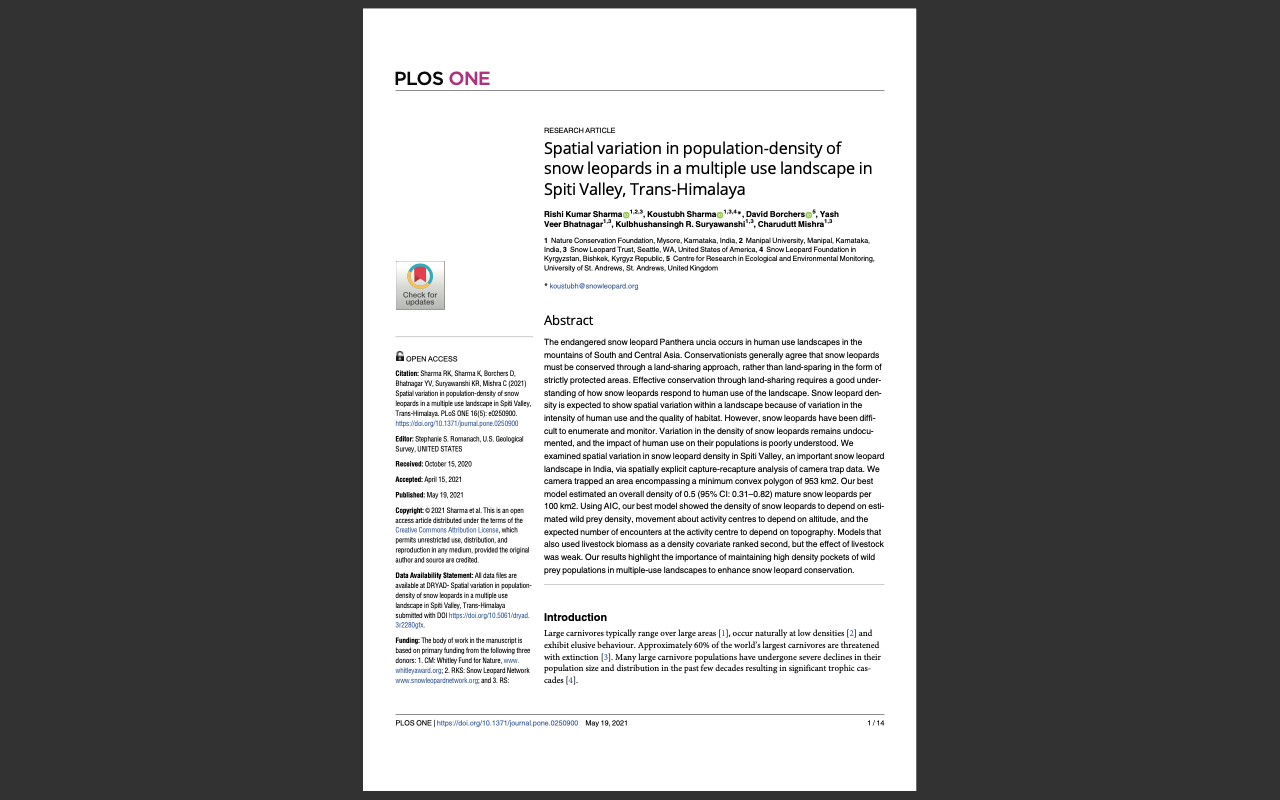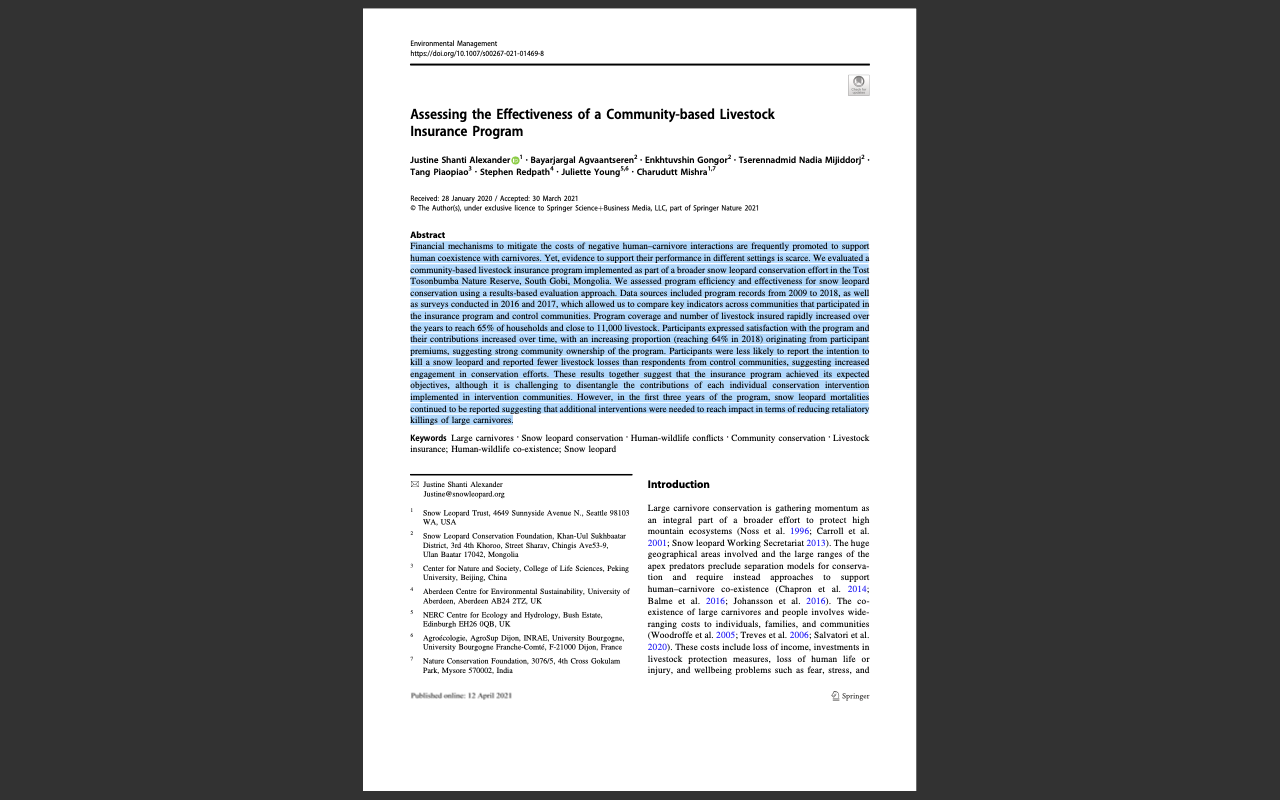Please find details below, of two new articles added to the Bibliography:
Title: Assessing the Effectiveness of a Community-based Livestock Insurance Program
Authors: Alexander, J. S., Agvaantseren, B., Gongor, E., Mijiddorj, T. N., Piaopiao, T., Stephen Redpath, S., Young, J., Mishra, C.
Abstract: Financial mechanisms to mitigate the costs of negative human–carnivore interactions are frequently promoted to support human coexistence with carnivores. Yet, evidence to support their performance in different settings is scarce. We evaluated a community-based livestock insurance program implemented as part of a broader snow leopard conservation effort in the Tost Tosonbumba Nature Reserve, South Gobi, Mongolia. We assessed program ef!ciency and effectiveness for snow leopard conservation using a results-based evaluation approach. Data sources included program records from 2009 to 2018, as well as surveys conducted in 2016 and 2017, which allowed us to compare key indicators across communities that participated in the insurance program and control communities. Program coverage and number of livestock insured rapidly increased over the years to reach 65% of households and close to 11,000 livestock. Participants expressed satisfaction with the program and their contributions increased over time, with an increasing proportion (reaching 64% in 2018) originating from participant premiums, suggesting strong community ownership of the program. Participants were less likely to report the intention to kill a snow leopard and reported fewer livestock losses than respondents from control communities, suggesting increased engagement in conservation efforts. These results together suggest that the insurance program achieved its expected objectives, although it is challenging to disentangle the contributions of each individual conservation intervention implemented in intervention communities. However, in the !rst three years of the program, snow leopard mortalities continued to be reported suggesting that additional interventions were needed to reach impact in terms of reducing retaliatory killings of large carnivores.

Title: Spatial variation in population-density of snow leopards in a multiple use landscape in Spiti Valley, Trans-Himalaya
Authors: Sharma, R. K., Sharma, K., Borchers, D., Bhatnagar, Y V., Suryawanshi, K. R., Mishra, C.
Abstract: The endangered snow leopard Panthera uncia occurs in human use landscapes in the mountains of South and Central Asia. Conservationists generally agree that snow leopards must be conserved through a land-sharing approach, rather than land-sparing in the form of strictly protected areas. Effective conservation through land-sharing requires a good understanding of how snow leopards respond to human use of the landscape. Snow leopard density is expected to show spatial variation within a landscape because of variation in the intensity of human use and the quality of habitat. However, snow leopards have been difficult to enumerate and monitor. Variation in the density of snow leopards remains undocumented, and the impact of human use on their populations is poorly understood. We examined spatial variation in snow leopard density in Spiti Valley, an important snow leopard landscape in India, via spatially explicit capture-recapture analysis of camera trap data. We camera trapped an area encompassing a minimum convex polygon of 953 km2. Our best model estimated an overall density of 0.5 (95% CI: 0.31–0.82) mature snow leopards per 100 km2. Using AIC, our best model showed the density of snow leopards to depend on estimated wild prey density, movement about activity centres to depend on altitude, and the expected number of encounters at the activity centre to depend on topography. Models that also used livestock biomass as a density covariate ranked second, but the effect of livestock was weak. Our results highlight the importance of maintaining high density pockets of wild prey populations in multiple-use landscapes to enhance snow leopard conservation.
URL


